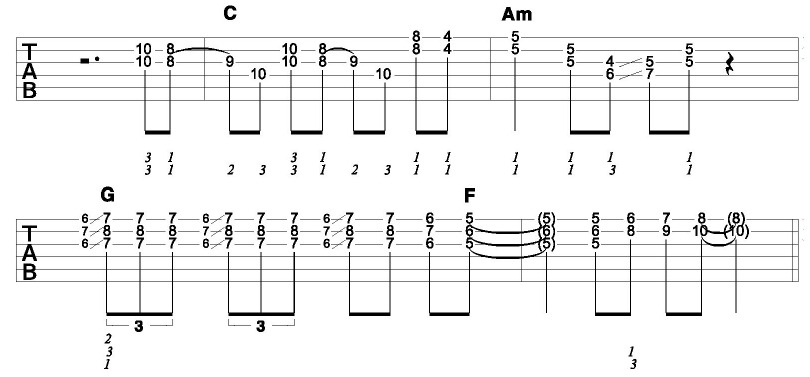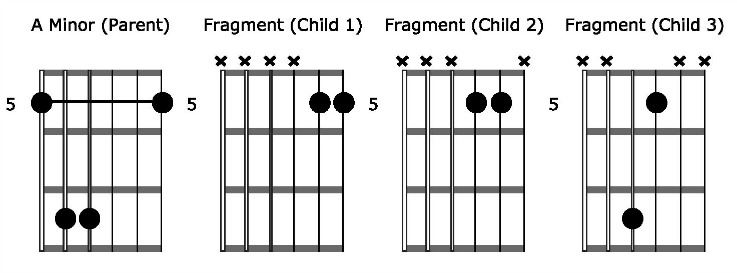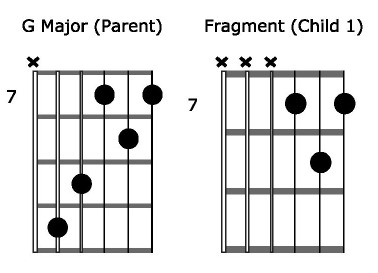How To Use Chords To Enhance Your Acoustic Guitar Solos
by Simon Candy
 Soloing on acoustic guitar was uncomfortable and awkward for me in my early years of playing. It seemed much harder to do than soloing on electric guitar.
Soloing on acoustic guitar was uncomfortable and awkward for me in my early years of playing. It seemed much harder to do than soloing on electric guitar.
That was until I discovered the concept of using chords in my solos. Most guitar players only think of single notes when soloing on guitar and keep chords for rhythm playing.
However, chords are a great soloing tool too!
There are many ways you can use chords for soloing on acoustic guitar, including adding them to the single note lines you play. You see, soloing is all about tension and release. If a solo has no tension and release, it has no appeal. It will sound dull and boring. Including an element of chords in your solo’s is a great way to create tension and release.
When I say chords, I am referring to chord fragments. Chord fragments come from breaking larger shapes up into smaller pieces, hence “fragments.”
Think of the large chord shape as the parent and the smaller fragments that you break it up into, as the children. If you know which children belong to which parents, then you will have a much more organised way of categorising your fragments on the fretboard leading to being able to recall anyone one of them at any time to use in your guitar solos.
How To Enhance Your Acoustic Guitar Solo’s Using Chord Fragments
Let's have a look at an example of applying some chord fragments to a solo line.
Here is an excerpt of a single note solo across a typical chord progression:

This sounds ok but can be enhanced by adding some chord fragments to it like this:

Now we have something with a little more texture to it with the chord fragments adding a whole lot of depth to the line.
Notice that in the example above, you are approaching your fragments by a fret below and/or above. There are also instances where the chord fragment is being approached chromatically from a few frets below.
On a guitar, to move chromatically simply means to move by a fret at a time. This is happening at the end of the 4th bar in the example above.
This is just one example of using chord fragments in your solo’s that will create a lot of movement and pump new life into your guitar playing.
Which Children Belong To Which Parent
To understand exactly what is going on in the example above you need to know where the chord fragments are coming from. In other words, which “children” belong to which “parent”.
Here is a break down for you.
Chord progression:
C Am G F
Shapes Used:




In the diagrams above you can see the larger “parent” chord form first followed by the fragments (ie. children) that are used in our example, and that belong to that parent chord form.
Organising your chord fragments in this way is absolutely crucial. It is the difference between you having all these fragments available to use, in real time, when soloing on your acoustic guitar and not.
Double Stops
Another great way to add texture and contrast to the solos you play is to use double stops.
A double stop is when you play 2 notes at the same time.
In the video below, you learn exercises that get you familiar with double stops as well as a variety of double stop riffs you can integrate into your playing:
Discover 5 cool and easy ways to use chords on your acoustic guitar to enhance the solos you play.